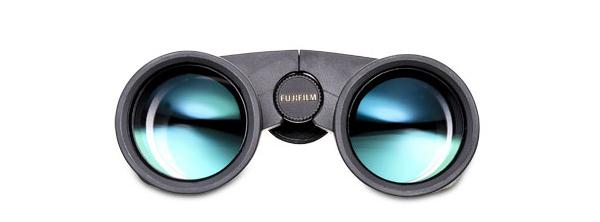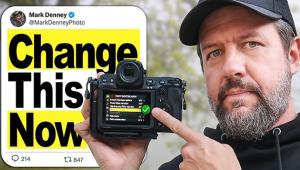How To Buy Binoculars (Gift Idea for Moms, Dads and Grads)

Binoculars make great gifts, but navigating the styles, descriptions, specifications and nomenclature can be dizzying. How does an 8x42 compare to a 7x50, and why are some models $999 while others are $99? Here’s a sensible (and short) guide to buying binoculars.
Familiar Brands
Binoculars are not photographic products per se, but most camera makers offer several models. Canon, Fujifilm, Nikon, Kowa, Leica, Olympus, Pentax and Zeiss are all active in this category. I don’t know about you, but I feel more comfortable buying field glasses from a company that I know makes great lenses.

Sizes and shapes range from pocketable to pack mule. The major shape differentiator is the prism style. Roof Prism binocs resemble popsicles, whereas with Porro Prism models the eyepiece is not in line with the exit pupil. There are pluses and minuses with each style, but for most practical purposes either shape gets the job done—so make this decision based on personal choice.
What’s up with the X?
Binoculars are identified by two numbers that indicate their Power and Objective Diameter. These two specifications appear with an X between them. For instance, 7x35 are seven power glasses with a 35mm objective diameter. The power number indicates how many times closer the subject will appear. Seven power makes things appear seven times closer. Eight power, eight times closer. Pretty simple.
The size of the objective diameter determines the amount of light that can pass through it at a given power. A pair of 7x50 binoculars are brighter than a pair of 7x35 because more light can pass through, assuming that all other specs are identical. 
When comparing glasses of different powers, divide the power number into the objective diameter. For example, the theoretical brightness of 7x35 and 10x50 binoculars is the same: 35 divided by 7 equals 5, the same factor we get if we divide 10 into 50. Remember, these are mathematical comparisons. Because of differences in lens coating, prism material and other factors, actual performance may vary.
Given the choice, brighter is better. High power, on the other hand, is a double-edged sword. Binoculars in the 10X to 12X range can be very difficult to handhold unless they offer some sort of image stabilization. A good all around choice (and my personal favorite) is 7x50.
Focus Method
Most binoculars use a Center Focus system. With this style, both optical tubes are adjusted by one knurled ring located between them. If you think you’ll have frequent need to use the glasses with only one hand, look for the rocker-style focus mechanism that can be operated with one finger.
Field of View
This spec tells you the width of the area you will see at a distance of 1,000 yards. Higher numbers indicate that the binoculars are more wideangle. With true wideangle binoculars you’ll be able to see more edge-to-edge, and that’s beneficial at football games and auto races, or when following wildlife that moves into and out of your field of view.
Eye Relief
As with camera viewfinders, Eye Relief describes the distance the binoculars may be positioned away from the eye and still be used comfortably. If you wear eyeglasses, look for eye relief numbers in the 18mm to 21mm range. Also look for Diopter Correction with click-stops. Diopter correction allows you to adjust the binocs to match your eyesight. Having click-stops allows you to reset quickly when your SO borrows the binoculars and changes the setting. Clicks also make it harder to move the dial accidentally.
Splurge for Purged
If you see a pair of glasses marked Nitrogen Purged, that means the individual optical tubes have been flooded with nitrogen gas and sealed, locking out water vapor that could condense on the inside glass surfaces and render them temporarily unusable. The added benefit is that sealing the nitrogen in seals the dust out. Binoculars with this feature are usually designated Fog Proof. Because of the sealed design, many purged binoculars are also designated water resistant or waterproof. Needless to say, water resistance is a worthwhile feature—after all, binoculars are used outdoors 99.9% of the time.

Serious Glass
Having BaK4 prisms is one of the hallmarks of truly high quality glasses. This is a more expensive prism type, but provides sharper images with less eye fatigue. Similarly, better models are Phase Corrected. When an optical beam is split by a prism or other means, the two light paths can become out-of-phase. Better quality binoculars use special lens coatings or other methods to correct this phenomenon.
You might also find binoculars that offer Image Stabilization (great feature but costly), an Internal Ranging Compass (if don’t know what that’s for you don’t need it) or a feature that sounds vaguely like Autofocus. Be very, very careful if you consider binoculars that do not require focusing because in most cases they are fixed focus, not the autofocus we know in the world of cameras. Fixed focus binoculars rely on your eyes to do the focusing—which means after limited use you’ll have a headache that all of the Excedrin in world can’t cure.
—Jon Sienkiewicz











































